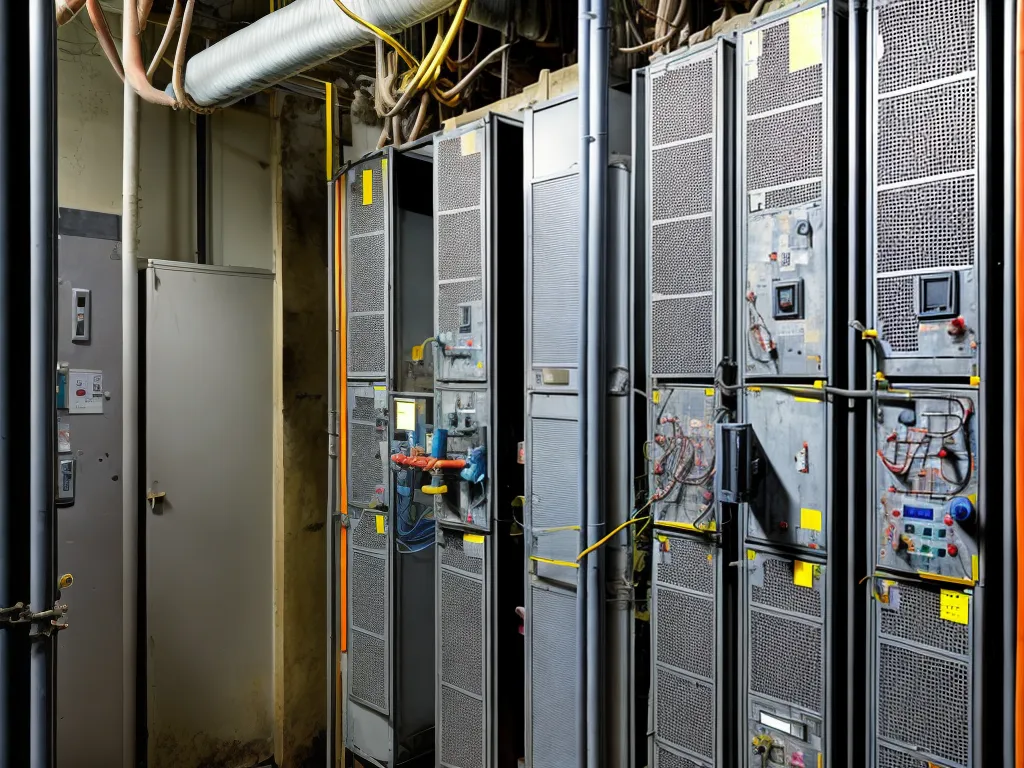
The Neglected Safety Risks of Industrial Electrical Panels
Industrial electrical panels are a crucial component of many facilities, yet their safety risks are often overlooked. As the end user, I must be vigilant to ensure my safety around these potentially dangerous devices. In this article, I will discuss the various hazards posed by electrical panels and steps I can take to use them safely.
Potential Electrical Hazards
Electrical panels contain high voltage electricity that can injure or even kill if mishandled. Some of the potential electrical hazards include:
Arc Flash
An arc flash occurs when electric current flows through ionized air between conductors. This causes an explosive release of energy that can result in severe burns. I risk an arc flash if I drop tools onto live parts or if faulty equipment triggers sparks.
Electric Shock
Direct contact with live parts can result in an electric shock. This can lead to severe burns or heart stoppage. Accessing electrical panels without proper safety gear exposes me to shock hazards.
Short Circuits
Short circuits happen when current bypasses the normal load path. This can generate extremely high temperatures and release potentially damaging energy. Improper wiring or damaged insulation increases the likelihood of short circuits developing.
Physical Hazards
In addition to electrical dangers, electrical panels also pose physical risks, such as:
Fire
Electrical faults can lead to overheating and spark fires. Fires in industrial facilities can spread rapidly and endanger lives. It's crucial that I install fire-resistant panels and keep flammable materials away.
Explosion
Certain conditions may cause electrical equipment to explode, sending shrapnel flying. This can happen with old transformers, overloaded circuits, or improper installations. I must wear PPE when working around equipment prone to explosions.
Tripping Hazards
Clutter and uncontrolled access result in tripping hazards around electrical panels. Falling on or near exposed live parts could be fatal. I must keep panel areas clear and obstacle-free.
Safe Electrical Panel Practices
To mitigate the hazards of electrical panels, I should adopt safety-focused work processes:
De-Energize and Lockout
Before accessing a panel, I will deactivate power at the breaker and use lockout/tagout (LOTO) procedures. This prevents accidental re-energization while I'm working.
Use PPE
I will wear personal protective equipment (PPE) like arc flash suits, insulated gloves, and face shields. PPE protects against electric shock, arc flash, and other hazards.
Inspect Frequently
I will perform routine inspections of electrical systems, checking for damaged parts or improperly rated components. Early identification of deficiencies enables proactive maintenance.
Follow Safety Standards
I must adhere to standards like NFPA 70E and OSHA 1910 Subpart S to ensure a safe working environment around electrical equipment. This involves proper panel maintenance, installation, and separation distances.
Hire Qualified Electricians
For complex panel work, I will utilize qualified electricians. They have the training to identify and mitigate hazards related to industrial electrical systems.
With knowledge of the potential risks and a commitment to safe work practices, I can avoid needless injuries and accidents involving electrical panels. The hazards are manageable with vigilance, precautions, and compliance with applicable safety regulations. By promoting electrical safety, I protect myself and contribute to the well-being of the entire workplace.